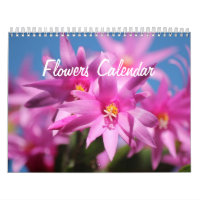What is the teal pumpkin project?
In recent years very special pumpkins - colored in specific teal hue - started to decorate the homes of thousands and thousands of homes all across the USA and Canada. Do you know what does a teal pumpkin mean? How this interesting project started? Or do you maybe want to participate in it but don't know how? Read on!
What do teal pumpkins mean?
Everybody knows what pumpkins represent on Halloween. They are rooted in the old Irish tradition of carving jack-o-lanterns, as the tool to trick the devil, but are now more seen as the sign of welcome to all the trick or treaters. By these mostly masked kids in Halloween costumes who are wandering from door to door for two reasons: to amuse whoever opens and get as many candies as possible.
But here we bump into a problem - candy can cause allergies and with close to 40 percent of kids in America suffering from one of many allergies, it's very hard to find a treat which is safe for everybody. Teal pumpkin enters! Like many great projects, this one also started with one person and a dream, well, actually, with one mom and a support group.
Who is Becky Basalone?
Becky is a mother of two boys with food intolerances and allergies. She has allergies as well. On the list of potential threats, we can find cow's milk, tree nuts, apple, cinnamon, shellfish, peanut and several food preservatives. These substances are not just annoying, they can cause anaphylaxis, which can end with death!
When her youngest son (then aged two) got his diagnosis, she started food allergy support group. With huge knowledge and organizational skills, Becky became a leader of FACET (Food Allergy Community of East Tennesee) but it was her 5-year-old son, who decided to color pumpkin with teal dye and put it on the porch. Why teal? Teal represents allergy and is a perfect choice to announce awareness of the family about the problem for some kids, who can feel excluded from the celebration of Halloween due to their health conditions.
What exactly teal pumpkin means? It simply offers a choice - apart from the classic bowl with a food they offered another bowl, with non-threatening 'tricks', like glow sticks, small toys, hair accessories, coloring sheets and so on. This means every kid can choose and everybody is included. A teal-colored pumpkin in front of your door means the end of stress, restrictions, and disappointments for about one of ten kids who might knock but will be welcomed at all of them.
Becky Basalone managed to include approximately 50 families in the first year of FACET and she started to make connections with similar groups in other areas through social media sites when they caught attention from FARE (Food Allergy Research Education). With their support, The Teal Pumpkin Project went nationwide. This year more than 100 thousand households in the USA is expected to participate.
This project has also got recognition in Canada and Great Britain as well, that means it is on the best way to become a worldwide success. It raises awareness about food intolerance and allergies, decreases health risks and makes Halloween as probably the most kid-related holiday more enjoyable than ever before. A simple project started by a mother with two sons became a huge lesson in empathy for all kids in the world.
How can you participate?
On next Halloween, you can put a teal colored pumpkin in front of your door (or a poster with a teal pumpkin on your fence or door) too. You can prepare two bowls - one with candy and another with non-food items. You can join one of the already existing support groups or establish a new one.
You can also spread the word about the project, educate people around you about allergies and safe alternatives to food with potentially hazardous content. Don't forget to educate yourself too - being careful with two bowls, making sure not touch both with the same hand to avoid the possibility of contamination the 'safe' bowl with allergens, for instance. Some people are so sensitive, they should not be even in the same room with peanuts!
Participating in The Teal Pumpkin Project doesn't stop on Halloween. You have a full year to acquire knowledge and inform your surrounding about the possibilities for inclusion of each and every kid into the most popular holiday for our little ones. Use #tealpumpkinproject on Twitter and get yourself on the map!
Few facts about allergies
Asthma, hay fever, food allergy, hives and atopic dermatitis are common for all age groups. Some of these conditions start in childhood and are over in later years, some are seasonal, some perennial, some symptoms will disappear, some will increase, some allergies more often develop at adults, some only at kids, some can be cured with special treatment (like immunotherapy) and in some cases only avoidance of allergen can help at maintaining satisfactory quality of life.
More than 50 million Americans suffer from allergy, what costs the economy about 18 billion per year. According to NHIS (National Health Institute Survey) in 2014 more than 5 % children suffer from food allergies, 8 % from hay fever, 10 % from respiratory and 11 % from skin allergies.
According to National Institutes of Health, more than half of all Americans have one or more allergies. The most fatal of all allergies is the allergy to penicillin, which can cause fatal anaphylaxis. About 40 thousand people have sinus surgery each year to relief chronic congestion. Allergies are serious and should never be ignored!
Non-food items for Teal Pumpkin Project in your very home
Here is a growing list of ideas (in alphabetical order):
- bendables
- bookmarks
- bottles of water
- bouncy balls
- bubbles and balloons
- coins
- cookie cutters
- crayons, pencils, erasers, pens, ...
- finger puppets
- flashing LED rings
- glow sticks, bracelets
- marbles
- mini comics
- monster squeakers
- noisemakers
- pencil toppers
- play dough
- playing cards
- porcupine balls, figures
- puzzles
- scary eye patches
- slime
- spider rings
- stamps
- stickers
- temporary tattoos
- vampire fangs
- whistles
- whoopie cushions
- yo-yos

Beware! Some non-food alternatives can posses risk on their own. Apart from obviously dangerous stuff, like firecrackers or objects with sharp edges, some can cause allergies due to their materials. Latex is definitely a material to avoid! Nickel (common in coins) is another one to consider.
The most common food allergens roughly sorted by frequency:
- milk
- egg
- peanut, soy, and other legumes
- tree nut
- wheat, corn and other cereals and grains
- fish and shellfish
- sesame
- different spices, like mustard or garlic
- avocado, kiwi and other fruit
- celery and other vegetables
- honey
Approximately 1 in every 13 kids in America suffer from food allergies. Symptoms may include sneezing, running nose, itchy eyes, rash, nausea, stomach cramps, diarrhea and in most serious cases breath difficulties, throwing up, swelling and chest pain, what may result even in passing out. Allergy conditions are number one health issue among children in the so-called developed world.
Did you know?
Allergic or not, today's kids consume far more artificial dyes than ever before. Research made by Purdue University in 2010 showed that an average kid eats 62 mg or artificial color per day, what is truly terrifying progress in comparison with 1950 when this quantity was 12 mg per day 'only'. Artificial food coloring is linked with numerous health risks and problematic children behavior. When you buy your next Halloween treat don't forget that studies name food dyes neurotoxic chemicals. Food colors may be one of the main reasons why the so-called elimination diets improved the behavior of problematic kids.









